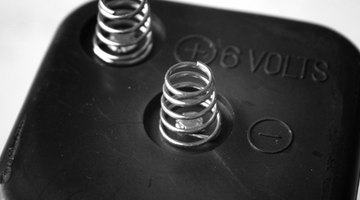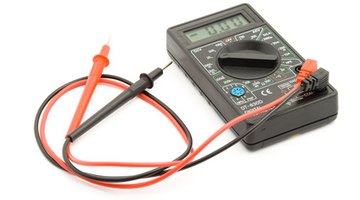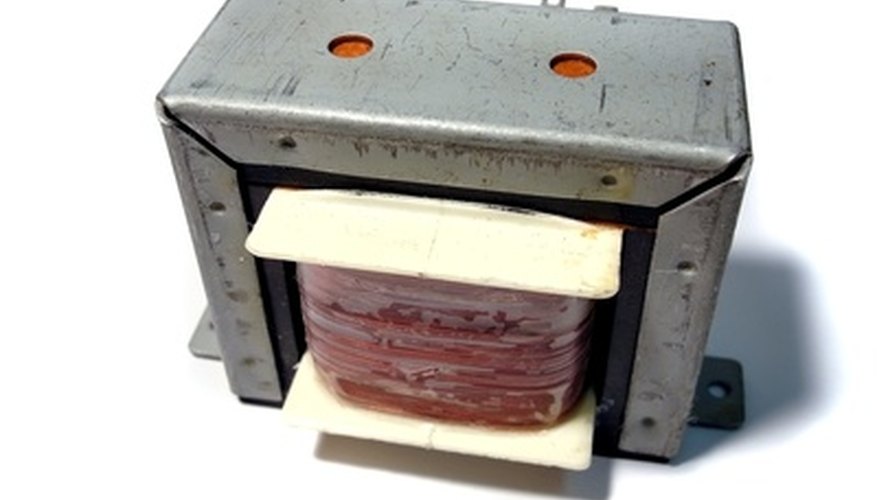Since direct current electrical energy requires a continuous electrical path, and since transformers conduct electrical energy by means of transient electromagnetic fields, direct current is unable to pass through a transformer. Isolation transformers are used to block direct current electrical energy, thus "isolating" electrical devices from exposure to DC electricity. The primary and secondary windings of an isolation transformer contain the same number of wire turns around the transformer core; therefore, the AC voltage at both ends of a transformer is the same. To test an isolation transformer, you must verify both that the transformer does not conduct DC electrical energy from the primary to the secondary, and that the primary and secondary voltages are equal.

Attach one end of the red alligator clip test lead to the positive terminal on the battery. Attach the other end of this test lead to one of the primary terminals on the transformer.
- Since direct current electrical energy requires a continuous electrical path, and since transformers conduct electrical energy by means of transient electromagnetic fields, direct current is unable to pass through a transformer.
- Attach the other end of this test lead to one of the primary terminals on the transformer.
Attach one end of the black alligator clip test lead to the negative terminal on the battery. Attach the other end of this test lead to the remaining primary terminal on the transformer.

Turn on the multimeter, and set the scale to "volts DC." Place the red multimeter probe on one of the transformer's secondary terminals and the black multimeter probe on the remaining secondary terminal. Check the multimeter display. If the multimeter shows a reading of more than zero volts, the transformer is malfunctioning and should be disposed of accordingly. However, if the multimeter shows a reading of zero volts, proceed to the next step.
Remove the alligator clip test leads from the battery. Attach the free end of the red test lead to one of the terminals on the AC power source. Attach the free end of the black test lead to the remaining terminal on the AC power source. Switch the multimeter scale to measure "volts AC."
- Turn on the multimeter, and set the scale to "volts DC."
- Attach the free end of the red test lead to one of the terminals on the AC power source.
Turn on the AC power source, and check the multimeter display. Remove the probes from the secondary terminals on the transformer. Place the red lead on one of the primary transformer terminals. Place the black lead on the remaining primary transformer terminal. Check the multimeter display once again. The voltage between the primary and secondary terminals must be the same. If the voltage is not equal on both sides of the transformer, the transformer should be disposed of accordingly.
- Turn on the AC power source, and check the multimeter display.
- Place the black lead on the remaining primary transformer terminal.
